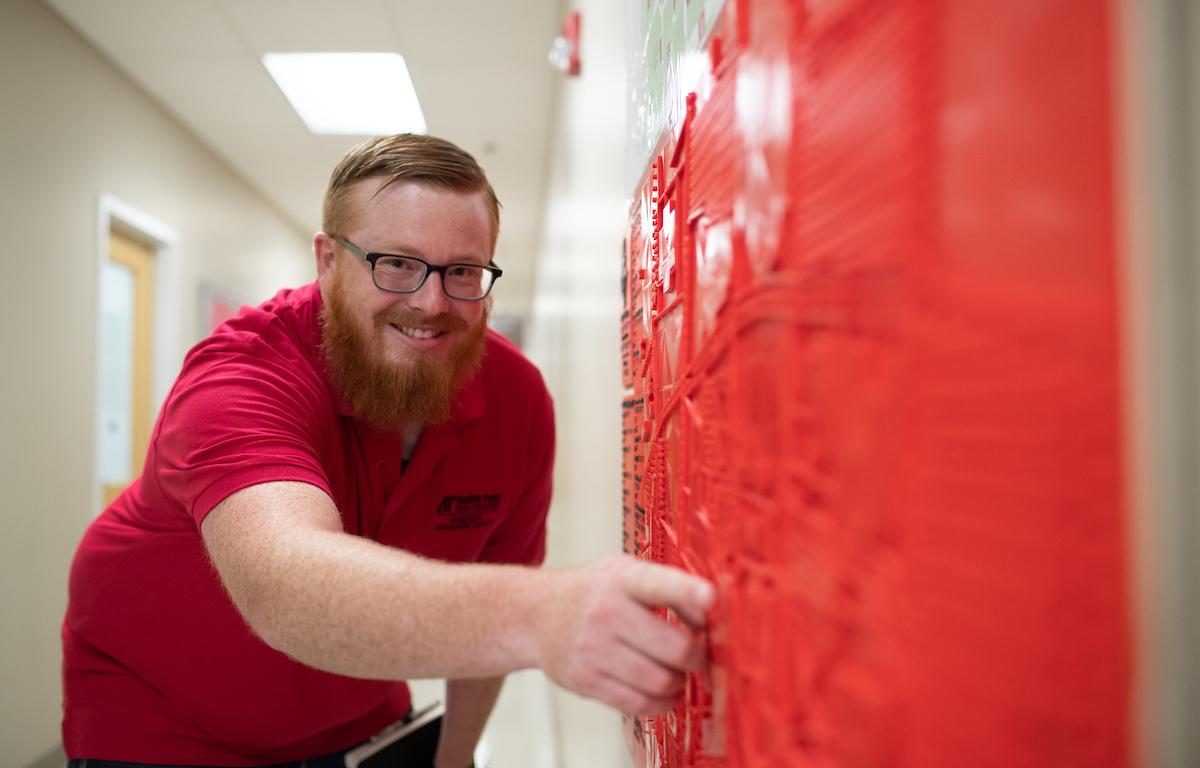CLARKSVILLE, Tenn (CLARKSVILLENOW) – Thanks to a student at Austin Peay’s GIS Center, the university was able to unveil a new, 3D printed tactile map of campus. The project will benefit students with low vision or no vision.
The map measures 36 inches across and 24 inches tall. It is made up of 48 3D-printed tiles, not including the six tiles making up the map’s legend.
Buildings are raised, flat and marked with braille lettering. Lawns are lowered and flat. Roads and parking lots are noted by raised plus signs. Sidewalks, not normally included on maps, are the most pronounced feature, being raised and easy to trace.
The idea for the map began with Jamie McCrary, office directer for Austin Peay’s Office of Student Disabilities. McCrary began thinking about the project after a visit from NASA during the 2017 solar eclipse. The scientists brought with them a guide that used Braille, charts and maps to include those unable to visually experience the eclipse.
McCrary later shared the book with a student who has no vision. “You could see the light bulb go off,” McCrary said. “You could see her smile. That (tactile guide) was just a concept to her she’d never even thought about.”
McCrary approached GIS Center Director Mike Wilson with the idea of using the center’s 3D printer to make a tactile campus map. Wilson assigned Michael Hunter, a GIS student worker, to the project.
Hunter started with open-source software, “but I felt it was missing a lot, such as sidewalks and large open areas, and I had to do a lot of research about Braille, so I started from square one.”
The project used the Center’s extensive GIS library of campus images to create a detailed map of campus. It took Hunter 168 hours to print the full-scale campus map and another seven to print the legend. Each tile, depending on its detail, took three to six hours to print, sometimes overnight.
Though Hunter feels the work was well worth it. He relayed the story of an out-of-state student who recently lost his vision starting classes this fall.”
“He’s being put in a new campus, a new state, away from his family,” said Hunter. “It’s going to be. ‘Hey, find your way. The map gives him the ability to live without relying on somebody else. It gives him the ability to be more dependent.”





